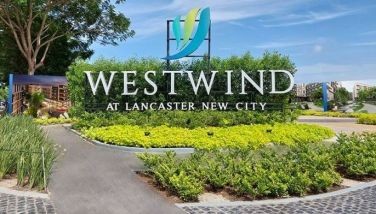Urban reform in the Philippines: Bridging our many divides

MANILA, Philippines — Urban and regional planning” and “peace and development” are phrases that rarely go hand-in-hand. Planner-architects and engineers dealing with the built environment rarely engage with those tagged as “peacebuilders,” that is, lawyer-negotiators, political scientists, and members of the security sector, let alone economists, development workers, or local civic organizations. However, this is a false divide, as many of the nation’s fundamental challenges are embedded in its streets and buildings, in the urban fabric of our communities.
There are serious implications when legal and political agreements —ranging from parameters for internal revenue allotments to federal systems of government—are drafted and implemented without clarifying their implications in actual space and place.
For the Philippines to reach its full potential, there is a need for area development that focuses not only on legalities, economic investment, or physical infrastructure, but also includes a full range of targeted, human-scale processes and designs that can bridge relationships between and among people who live, work, and play in the most vulnerable communities.
Part of the problem lies in the misconception that the need for “peace-building” is a niche issue that affects only people in the hinterlands. However, conflict and the social inequality that fuels it is a barrier to the entire country’s full socio-economic potential. The Philippines is one of the most risk-prone countries in the world. In 2018, it ranked second globally in terms of internal displacement – 80 percent due to natural disasters, and 20 percent due to armed conflict. The protracted, low-intensity and seemingly intractable nature of localized and multiple conflicts means that social tensions are never fully resolved, and often spills into what is called horizontal conflicts related to political competition and the so-called “shadow economy.”
No country with a running subnational conflict such as that experienced in the Philippines for the last six decades has achieved a Sustainable Development Goal. Estimates show that it costs a medium-sized developing country the equivalent of 30 years of GDP growth, and will take at least a generation to reverse. Although poverty is not a direct cause of conflict, it is clear that poverty is a driver of conflict, while conflict exacerbates poverty.
Although these contestations have traditionally been rural in nature, increasing urbanization is making a place-centered approach to peace-building, or a conflict-sensitive approach to place-making, a more urgent issue. At present, half of all Filipinos live in cities. This is projected to reach 84 percent by 2050.
Philippine cities generate 70 percent of the GDP, of which 36 percent is generated in Metro Manila alone. Cities are conflictual by their very nature, but the density of people, infrastructure, goods, and services that characterizes urban life ensures that the scale of urban violence and insecurity can easily eclipse that of open warfare, with high human and economic costs.
So what can be done to connect and not divide? Much of the established conflict economics toolkits are at the national, regional, and provincial levels (which are crucial for strategic planning), but the nuances of these areas can be best understood and therefore implemented at the level of the city and the architectural shape of neighborhoods, in the praxis of what people in cities do.
For people working as urban planners, engineers or architects, this means shifting from the dominant Philippine misconception of spatial planning as a purely technocratic or physical design exercise but something closer to what scholars describe as ‘place-governance.’ While planning at its best can and should be a tool for inclusive economic growth and redistributive justice, it is often complicit in the power structures that propagate inequalities themselves.
A useful guidephrase is ‘conflict-sensitivity,’ which is operationally defined as a contextual understanding of the conflict topography unique to a given area that should inform programs and project interventions. It is a term typically used in tandem with the principle of “do no harm,” meaning that development decisions should not cause further damage to a community or a society that has been ravaged by conflict. This highlights that there are no “one-size-fits-all” solutions, and so interventions must be nuanced based on the specific drivers and challenges in the area.
This asks for a multi-dimensional, multi-sectoral framework, not sectoral silos, which will then be grounded in space and place. An approach with a place-governance lens demands a balance between both short-term con?dence-building requirements and long-term broad developmental outcomes, which cannot be limited by traditional three-year political terms. Similarly, this means that culture and identity is not just a question of aesthetic design, but asks how people use places and spaces to live, work and play.
This also means gradually building a homegrown conception of Philippine archipelagic urban politics, given that the planning concepts and land ownership laws presently in use and taught in schools are legacies of our Spanish and American colonial pasts. As shown in our car-centric transport system, these foreign models are often stacked towards the middle-class and upper-middle class. The Philippines has no national urban or general land use policy or plan, and is hampered by fractured institutional authorities and disjointed coordination and integration among city, province, and national administrations.
At its core, the toolkit for place-making for peace-building is driven by two things: ensuring connections, not divisions, and “dealing with the past,” or the things that make people hurt and angry — in tangible form. It also hearkens back in many ways to the model of peace-building as a spiritual and ethical act, particularly to the root work of religion, re-ligiere, which means reconnection. It is not about dogma or right or wrong, but bringing together what has been severed. By helping design and strengthen processes that can support sustainable and inclusive places, we may ripen to models of local governance and place-leadership that can bridge our many divides.
* * *
Maria Carmen ‘Ica’ Fernandez is an urban planner working on the intersections of land, culture, governance and armed conflict. She occasionally writes at icafernandez.com and urbanismo.ph.



















